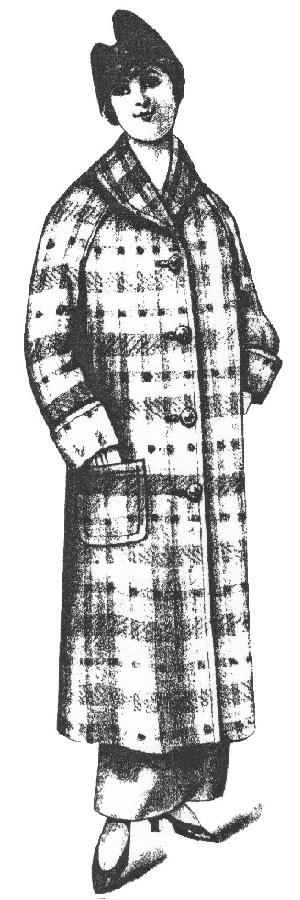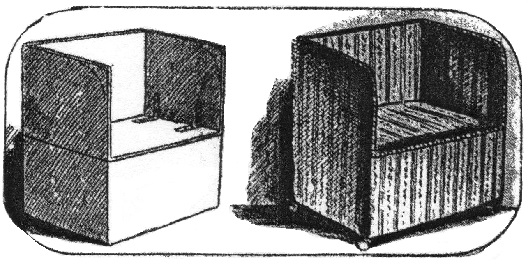100 years ago: March, April & May 1915 in ‘Weigel’s Journal of Fashion’
1 May 2015 4:30 PMVeronica LampkinSTYLE, FASHION & THRIFT IN 1915

.jpg) With war now well under way, Weigel’s Journal of Fashion opened the March 1915 lead article with strong words on monotony – this was not acceptable, even in such difficult times. Indeed, ‘monotony is repellent’, advised the writer. A change need not be frivolous, simply a change in style to vary the wardrobe. ‘Dignified simplicity’ was the keynote, with the tailor-made garments most welcome.
With war now well under way, Weigel’s Journal of Fashion opened the March 1915 lead article with strong words on monotony – this was not acceptable, even in such difficult times. Indeed, ‘monotony is repellent’, advised the writer. A change need not be frivolous, simply a change in style to vary the wardrobe. ‘Dignified simplicity’ was the keynote, with the tailor-made garments most welcome.
The new autumn fashions had no waistline, just a long straight line from shoulder to hem, the line often broken only by a low, wide band around the hip.
A typical pattern was Pattern 3971: Lady’s Coat, with or without Belt; High or Roll Collar. Both versions are shown alongside, including some of the military influence on millinery.
The demands of wartime brought practical choices for women who sewed at home. Using Pattern 3971, they could now sew a comfortable coat and make several choices about the style: the length could be ⅞ or shorter; the belt could be worn all round, just at the back, or not at all; two collars were provided, one a roll collar, the other a ‘military collar’, in line with the prevailing situation; and the collar could either match or contrast to the coat. Times certainly had changed from the restrictions of earlier decades when women had little choice but to follow far stricter dress codes.
With a serious note on economy, Weigel’s Journal of Fashion opened the April 1915 main article with advice on maintaining appearances, lifestyles, and budgets:
‘While it is advisable, and indeed necessary, that we should exercise economy and avoid waste in every possible way, in food, drink, clothes, furnishings, holiday-making and every other concern of living, during this strenuous time, we must remember that if we go to the other extreme the result, naturally, will be equally disastrous. Such a course would mean sudden ruin to hundreds of business people...To look miserable, underfed, shabby, worn out and depressed for want of a holiday, is no help to mind or body in the present sad state of affairs.
So Madame Weigel recommended readers should ‘freshen the season-tired hat’, or ‘renovate the once attractive costume’, ‘iron the crumpled bows – if new ribbons are not attainable – and if a new gown is out of the question’. The novice stylist should find a style that suited her, and stick to it, and renovate, renovate, renovate. Madame Weigel always exercised caution with the purses of her readers.
Initiative also came to the fore, especially for those in remote areas – or, as Weigel’s journal noted in March 1915 – ‘those living far inland, where cases and boxes are often plentiful, but the carriage of furniture is a more serious matter’.
Readers could take two strong boxes or packing cases and make this ‘Home-Made Seat for a Child’. Once the boxes were screwed together, smoothed and rounded, and covered with fabric such as a pretty striped cretonne, braid, and brass headed nails, castors were added to the base so that this nifty and economical box seat could be easily moved around the home.

Madame Veronica: Madame Weigel devotee, writer, collector
© Dr Veronica R. Lampkin: Madame Weigel’s Patterns. 1 May 2015.
